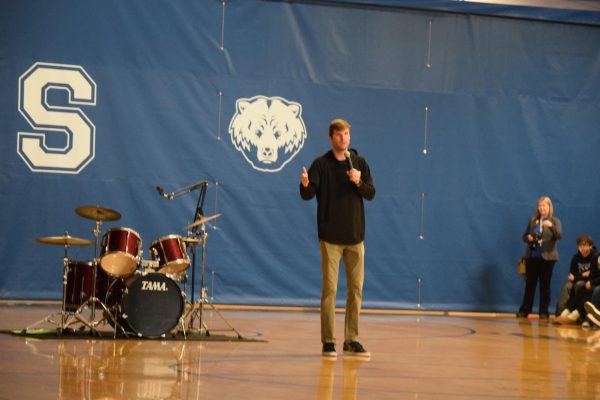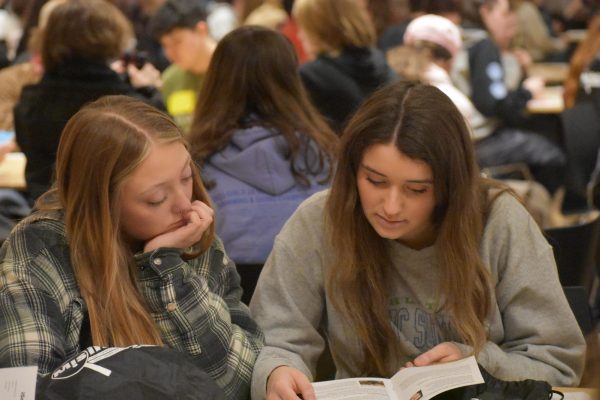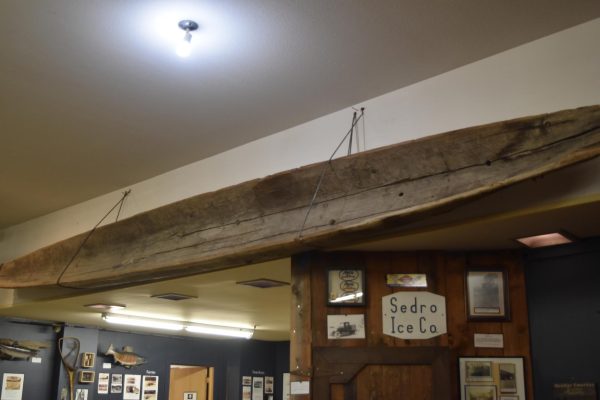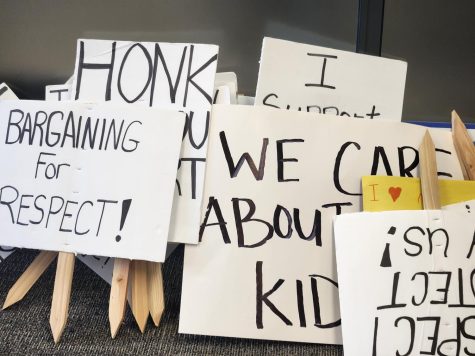State’s failure to fund education takes its toll on local schools
Budget cuts this year at Sedro-Woolley High School are expected to influence everything from laminate to colored paper, but the real effects might have an even deeper impact.
Over the past months, state funding provided to Sedro-Woolley and its surrounding districts has decreased by approximately $1.5 million, according to Christina Jepperson, Sedro-Woolley School Board President.
“We are wanting to impact our students and families the least amount possible,” said Jepperson.
Brett Greenwood, budget director for SWSD said that there are five big changes that contributed to a budget deficit this year.
“One, the McCleary decision which increased state funding, but lowered out local funding by about $6 million. The state did not completely back fill the $6 million reduction which created a shortfall for us,” said Greenwood.
In early 2017, in the case of McCleary v. Washington, the state was sued for failing to provide adequate funding to schools, and it was decided that the budget would be increased statewide, but Greenwood explains that as a result, local funding was decreased by approximately $6 million, a reduction that has not fully been paid for by the state.
“Secondly, the state changed the health benefit package for all school employees, which is great, but they did not fund it – putting us further in the hole by $700,000,” said Greenwood.
Christina Jepperson adds to this by explaining how added health benefits have increased for staff district wide, something that, while intended to have a positive benefit, ended up backfiring and putting more pressure on employees.
Sedro-Woolley, however, has not had to resort to the downsizing of staff due to a reserve fund implemented by the school board. This has also helped keep student programs running despite shortfalls.
“The impact [of decreased funding] has been more on our staff unfortunately, but they have been understanding and accommodating where they can,” said Jepperson. “In addition, we have not laid off employees, decreased classroom offerings, or removed programs as other schools have done.”
The third and fourth changes responsible for lack of funding for special education programs and other school amenities.
“The state funds us on a proto-typical school model that doesn’t work,” said Greenwood. “In this model, Sedro-Woolley is only funded for 75 percent of one nurse, district wide.”
The fifth and final attribute to this year’s budget cut can be attributed to the lumber industry. “Trade war issues have stalled our timber industry and we count on that funding each year,” said Greenwood.
Sedro-Woolley School District typically receives around $60,000, but this year the district only received $6,000.
“One month where we would normally expect about $40,000, we received only in the $40 range. As you can imagine, months of this type of significant decrease in our revenue has impacted our budget,” said Jepperson.
SWHS science teacher Laura Degerness notes that the decrease in funding has affected not only her ability to provide materials for students, but also made it difficult to pay for substitute teachers and education training, as well as threatened to put a halt to the annual field trips she takes with her marine biology class, something she believes to be a very enriching experience for students.
“I might not be able to take my marine biology class on these field trips that we go on because it costs our science department quite a bit of money,” said Degerness.
Degerness adds that meetings to discuss the planning of these trips and of the science curriculum as a whole have been restricted due to the lack of funding required to hire substitute teachers during absences.
“As science department we have usually three meetings a year. We all have subs, and we need to go talk about implementing these next generation science standards, but the district has a stop on all sub days paid for by the district, so we can’t have any meetings paid for by the district,” said Degerness.
Even with these setbacks, Degerness admits that the science department was not hit the hardest due to funding that was left from previous years. If the budget continues to decrease she worries other classes that rely on student fees in order to provide needed materials could suffer, and possibly turn to increasing these fees to make up for lack of funding.
“Some fees could possibly be increased as the supply fund for SWHS has been reduced by 20 percent. However, before we increase fees we would ask the SWHS leadership to work with each program to find a way to deliver the same curriculum, but not incur new or increased charges,” said Greenwood.
Greenwood explained that even though these cuts will have an effect in other areas, like decreased funding within the special education and highly capable programs, and the Inability to fund nursing, custodial, and counseling services, the budget directly impacting classrooms and students is a last resort.
This means that in the upcoming years it is unclear whether Sedro-Woolley will feel greater impact from the lack of funding. As of yet, the district members are putting all their efforts toward keeping the effects of budget cuts away from students in hopes that adequate funding for education will eventually be supported.
“I urge the voting public to write to our senators and representatives to ask that they fully fund education,” said Jepperson.













